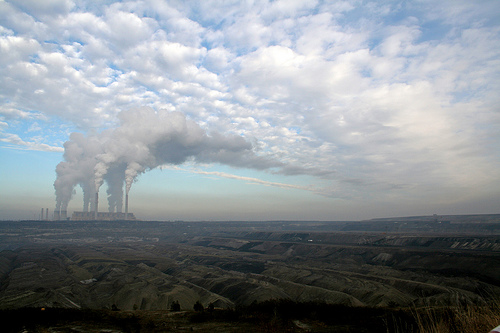When we consider coal export plans, we would do well to consider the risk that by-products of the coal may return to haunt us. In fact, there is a growing body of scientific research examining the ways that smokestack emissions cross oceans to cause pollution problems halfway around the world.
In March, for example, the US National Oceanic and Atmospheric Administration released shocking research findings:
Several recent studies have shown that powerful spring winds can carry Asian pollution into the atmosphere above North America. …some of the imported pollution can descend to the surface, where it affects ground-level ozone, a regulated pollutant. At high concentrations, ground-level ozone can cause severe respiratory effects in some people, and it damages crops, trees, and other vegetation.
“We showed that Asian pollution directly contributes to surface ozone pollution episodes in parts of the western United States,” said Meiyun Lin, Ph.D., lead author of the new study.
In other words, some of the air pollution problems in North America result from the pollution emitted by Asian coal plants and industrial facilities.
NOAA’s findings were not entirely new, however.
The Task Force on Hemispheric Transport of Air Pollution has found that as much as a quarter of ground level ozone pollution in the northern mid-latitudes arrives from the stratosphere. Downwind of eastern Asia (i.e. in North America), researchers have clearly documented that marine air can import ozone concentrations that exceed air quality standards. Scientists there have also shown that soot, dust, and mercury can travel from one continent to another.
There’s a Northwest dimension to the intercontinental pollution story too. As Sightline has pointed out, sulfur compounds, soot, and other byproducts of Asian coal combustion are detectable on mountaintops in the western United States. Researchers have also linked ozone in the air above the United States to pollution from developing Asian countries that are burning fossil fuels.
Mercury is especially likely to travel across the Pacific Ocean. An Oregon researcher estimates that as much as 18 percent of the mercury in Oregon’s Willamette River comes from sources overseas, increasingly from China. Another study found that human-created pollution from Asia contributed to 14 percent of the mercury dropped on Mount Bachelor in central Oregon.
Yet, the most pernicious form of pollution that crosses geographic boundaries may simply be the greenhouse gases that are emitted by burning large amounts of coal. For example, burning 100 million tons of Powder River Basin coal releases roughly 180 million tons of heat-trapping carbon-dioxide into the atmosphere. That’s about twice as much global warming pollution as results from every activity in Washington in a year, including every power plant, car, truck, factory, and farm in the state combined.
Thanks to Kathy Washienko who provided invaluable research assistance.










Jed Anderson
What’s really shocking is that our current air quality management system in the United States places the ultimately responsibility for addressing this foreign pollution on the States–who do not have the authority to directly address the problem. The Clean Air Act provides the following, “Each State shall have the primary responsibility for assuring air quality within the entire geographic area comprising such state by submitting an implementation plan for such State which will specify the manner in which national primary and secondary ambient air quality standards will be achieved and maintained . . .” (42 U.S.C. § 7407(a)). When the Clean Air Act was written it was thought that air pollution was largely a local problem. The world has since changed. We must now change with it. It’s time to transform the State Implementation Plan process (see http://www.sipreform.com). We can make it happen.